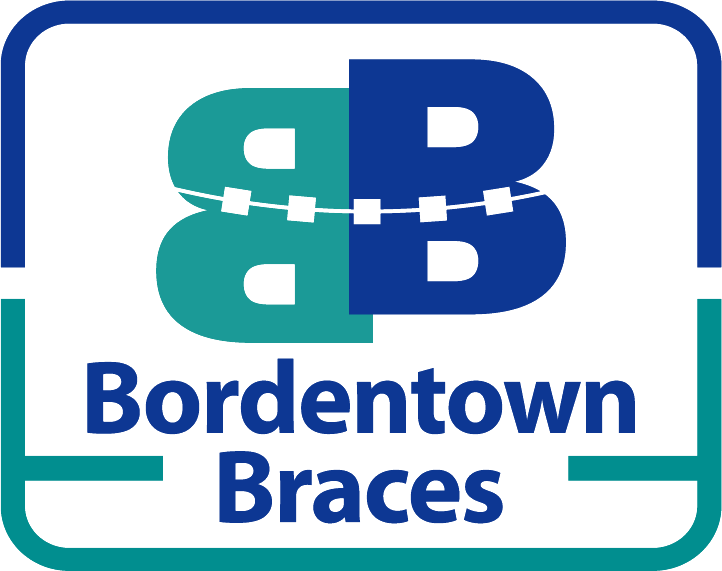
4 Questions To Ask Yourself About Brushing With Braces
Brushing: it’s the foundation for keeping your mouth clean and healthy. And while you’re in braces, you must do a careful, thorough job. So now is a perfect time to examine how well you brush your teeth.
Most people do not pay enough attention to their oral hygiene or do not brush long enough. These bad habits are not good for the health of your teeth, especially when you have braces.
Your braces must be taken care of, just like your teeth.
If you do not brush your teeth properly while wearing braces, the surfaces of the teeth that are not covered by the bracket can yellow, leaving you with discoloration and splotches after the brackets are removed, so it is critical to assess your tooth brushing habits and fix them up where it is needed.
So what can you do to help your oral health and brushing habits with braces?
Here is some brushing with braces tips for kids from an orthodontist in Hamilton Square, NJ!
Ask yourself these questions:
1. Are you using the proper brush?
Your toothbrush should be small enough to reach every small corner inside your mouth to get all the tiny particles of food out. The best types should have soft bristles to gently remove the plaque and debris without damaging your teeth or enamel.
Using a toothbrush with a smaller head can help you to get the food particles stuck in the brackets out, which will help prevent bad breath, discoloration, and protect your braces.
Braces can make your toothbrush wear down faster due to the metal parts and increased friction, so make sure that you are getting a new toothbrush every few months, or when the bristle show visible signs of wear and tear.
Make sure that you do not put off replacing your toothbrush when it is worn because you will not be getting your teeth as clean as they could be.
2. Are you using the right techniques?
Brush with the bristles against your teeth and gum line at a 45-degree angle. Brush in small, circular strokes, imagining plaque being swept away from the gum line.
NEVER brush too hard. Think about holding your toothbrush like a paintbrush! When it comes to brushing, elbow grease won’t get you anywhere—it just flattens the bristles against your braces where they can’t do any good. And, it can wear down your enamel more quickly.
If you feel like the pressure you are using would scratch your skin if you used it in on your arm, then you are brushing way too hard!
Additionally, do not use too much toothpaste! The foam toothpaste creates makes it more difficult to see where the plaque and debris are in your teeth, and so your teeth do not get as clean as they could be.
3. Are you thorough?
It takes at least two minutes to do a thorough brushing job… 30 seconds per quadrant. While you’re in braces, it may take a little bit longer. And, don’t forget these frequently ignored spots:
- the inner side of your front teeth
- your tongue
- the inner side of back molars, next to your tongue
- carefully around all braces corners and orthodontic work
Use mouthwash before bed to help get any lingering bacteria or food particles stuck in the brackets that were not removed by brushing or flossing. Even if you can’t see the particles, still use mouthwash.
4. Are you brushing often enough?
You should be brushing your teeth after every meal, as well as flossing. This helps to prevent food particles from getting stuck in the wires or brackets of your braces, which makes them more comfortable, healthy, and less prone to cavities.
You can purchase travel toothbrushes that can fit in backpacks or purses for easy access.
Although you should be brushing after eating meals or drinking sugary drinks, you should not over brush your teeth. You can end up damaging the enamel on your teeth, causing more pain and tooth sensitivity later on in your life.
Watch This Helpful Video & View These Guidelines
The American Dental Hygienists’ Association has produced a quick-reference guide.
Ready To Take It To The Next Level?
If you feel like you have the basics covered, try these tips:
- Brush without toothpaste. It makes you more aware of where you do and do not brush. (Please, however, only use this as a training exercise and use toothpaste when you brush your teeth.)
- Try a plaque-disclosing tablet or rinse. Usually made for kids, these products color the plaque on your teeth so you can see your progress. This can be a very eye-opening experience for kids to understand all the spots that they need to make sure they are working on while brushing. This will help them to remember where they need to brush more or get the floss in further.
- Most people follow the same pattern each time they brush. Try starting in a new place every day. This ensures that all the parts of your mouth get equal treatment by a toothbrush.
- Don’t forget to floss! Use special tools for between your teeth and your braces, if needed. You can purchase floss threaders at your local pharmacy, or ask your orthodontist or dentist for some. There are also special floss strands specially made for braces with thinner ends and thicker centers to help clear out debris and food from all sizes of spaces within your teeth and braces.
Brushing your teeth well, especially with braces for kids, is an aspect of your health that is often overlooked. People may mindlessly shove the toothbrush around their mouth, but that does not get their teeth properly cleaned.
Now that you are armed with valuable information and tips for how to brush with braces, your teeth should be healthy and strong during and after your braces experience!
These tips are not just for brushing with braces, and they can be applied to your oral health routine after you have had your braces removed to keep up your fresh, shiny, (and straight,) smile!
